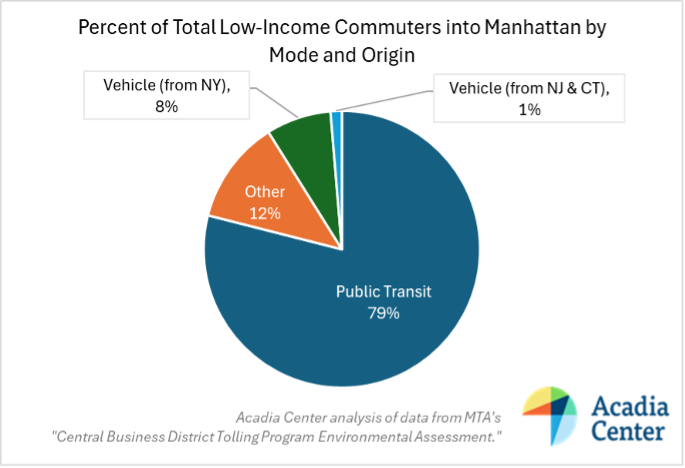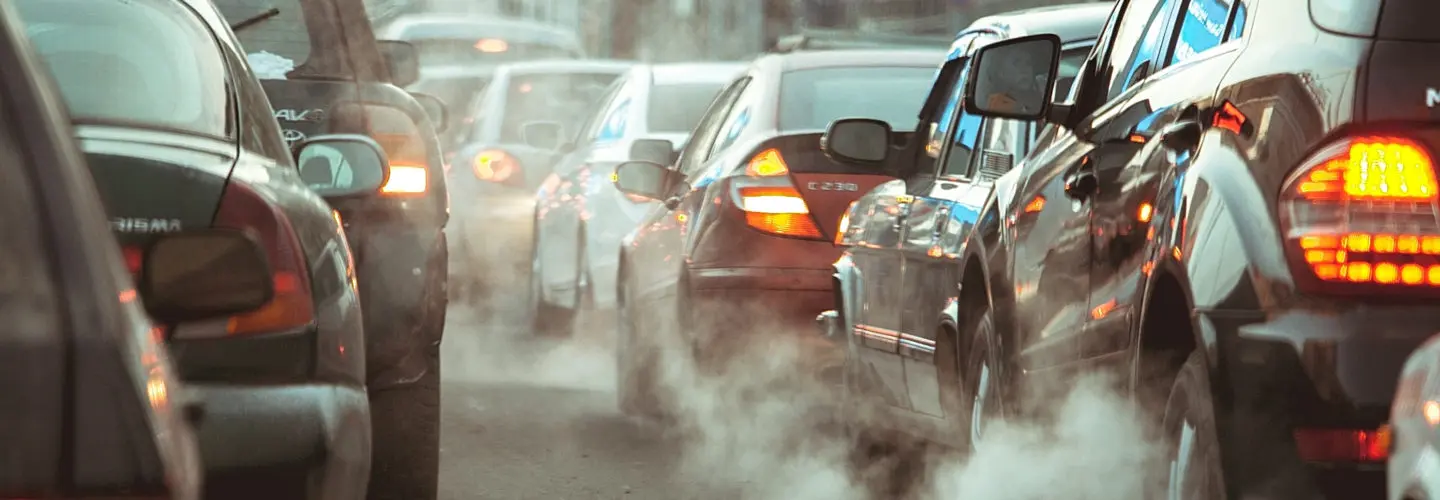Myth Busting: Congestion Pricing
Congestion is a policy designed to reduce traffic in the most congested areas of cities by charging vehicles a fee to enter designated areas. Congestion pricing has been successfully used in London and other locations. New York City’s (NYC’s) created the first major congestion pricing plan in the United States. The plan imposes a charge on vehicles to enter the highly congested lower part of Manhattan below 60th Street. The goal of this policy is to decrease traffic volume in the central business district (CBD) of Manhattan, improve air quality and generate revenue for public transportation improvements. Additionally, the plan is intended to improve walkability, capacity for bikes and increase funding for ADA accessibility to public transit, making multimodal transportation safer for everyone in NYC. The program was estimated to generate about $1 billion per year and finance $15 billion for infrastructure projects for the Metropolitan Transportation Authority (MTA), which is in urgent need of improvements to the city’s subway system.
Seemingly everything was in line to start the program, including a state law passed back in 2019 and the approval from the federal government in 2023. But in an unexpected step, New York City’s congestion pricing program has been indefinitely paused by Governor Hochul, just weeks before its planned start date on June 30, 2024. The governor’s office cited concerns over affordability and the cost of living. Additionally, articles like one from Politico suggest that the decision was driven by public polls showing strong opposition to the initiative, especially among voters in the greater metropolitan region and suburbs.
Congestion pricing in NYC presented an excellent opportunity for such a transit-dependent city to keep reducing its collective carbon footprint and improve the quality of life for residents, but opponents to the program seem to perpetuate several myths about congestion pricing that contributed to the program being paused. So, let’s clear up some common myths and get to the facts about what congestion pricing could mean for the city.
Myth: Congestion Pricing Will Hurt the Economy
Fact: Unfortunately, much of the tolling infrastructure needed to implement the program has already been installed in NYC, at a cost of $507 million. Unless the Governor reverses course, this significant infrastructure investment will now go to waste, effectively flushing away taxpayer money. As a direct result of the congestion pricing pause, there is now a $15 billion shortfall in the MTA’s 2020 – 2024 Capital Program. The funds to compensate for this shortfall will now have to be sourced from elsewhere. Some sources like CNN believe it will likely come from increase in taxation either on individuals or on businesses.
NYC’s economy largely relies on public transportation, with 70% of residents commuting by subway, bike or by foot. Most NYC commuters wouldn’t be directly impacted by congestion pricing. Instead, not implementing it deprives public transit of essential funding, hurting the majority who rely on it.
Reducing congestion would also bring significant economic benefits. It improves productivity by decreasing the time spent stuck in traffic. Efficiency in transportation translated to cost savings for businesses that depend on timely deliver and punctuality. Less congestion means lower operating costs for businesses and workers including lower fuel consumptions. Furthermore, cleaner air from fewer emissions can lead to lower healthcare costs, fostering a healthier workforce and community.
Myth: Congestion Pricing Will Hurt Low-Income Drivers the Most.
Fact: According to MTA’s Environmental Assessment, over 91% of low-income commuters do not commute using a car. The vast majority of the commuters who are low-income in NYC rely on public transportation. The data from that Assessment shows that among low-income commuters, 79% use public transit, 8% are vehicles from NY, 1% are vehicles from NJ and CT, and 12% use other means. Highlighting that low-income individuals in the tri-state area are unlikely to be impacted by congestion pricing and more likely to reap the benefits from improved public transit funded by the program.

F urthermore, exemptions and discounts were also planned by the MTA for Low-Income Drivers and for exemptions for Disability. A 50% discount would have been available for low-income vehicle owners enrolled in the Low-Income Discount Plan (LIDP) after the first 10 trips in a calendar month. With additional low-income tax credits for those whose earn a gross income under $60,000 would qualify for a tax credit equivalent to the amount of tolls paid. The Individual Disability Exemption Plan (IDEP) is available for individuals whose disabilities or health conditions prevent them from using transit. This exemption can apply to a vehicle registered to the applicant or a designated caregiver’s vehicle used to drive the applicant in the Congestion Relief Zone.
The suburb commuters who will benefit from halting congestion pricing are also the smallest percentage of commuters. By not implementing congestion pricing, the state is effectively prioritizing the needs of suburban residents over low-income commuters into NYC and the residents of NYC.
Myth: Congestion Pricing is Intentionally Punishing Commuters from Others States Like NJ and CT.
Fact: According to its Environmental Impact Assessment, the MTA found that from all the work trips entering the CBD only 3.2% of them where drivers from NJ and CT. The program also planned to have notable “crossing credits” which are reduced fees for tunnel users from NJ and Long Island. Congestion pricing could motivate CT and NJ to enhance their own transportation systems, directly benefiting their residents and addressing long-standing demands for better commuter options.
Myth: Suspending Congestion Pricing is Inconsequential
Fact: Congestion pricing is a proven and effective solution for reducing air pollution and improving urban living conditions. Congestion pricing tackles critical urban issues like enhancing public transportation, air quality, safety, walkability, or accessibility which are tangible benefits residents can appreciate.
Delaying congestion pricing indefinitely fosters distrust and delays the implementation of a program that is essential to achieving the State’s climate goals. For government to earn trust, it must be consistent. Changing course so suddenly has consequences for many, including state lawmakers who backed the law, government agencies who were counting on the funding and even the construction industry planning for the subway improvements funded by congestion pricing. The $507 million already spent on the tolling infrastructure risks appearing to be wasted, leaving many constituents feeling distrust of the decision-making process.
Recommendations
Acadia Center believes that the economic, climate, quality of life and equity benefits of the NYC Congestion Plan are clear and powerful. Gov. Hochul and other state and city leaders should work together now to implement a congestion pricing plan, avoid massive interruptions in funding needed for transportation infrastructure and send the right price signals around over reliance on cars in urban areas.
Join the Conversation
We encourage you to share your thoughts and questions about congestion pricing. Let’s work together to create a better, more sustainable tri-state area.
Paola Moncada Tamayo
Policy Analyst
ptamayo@acadiacenter.org
212-256-1535 ext.204



















